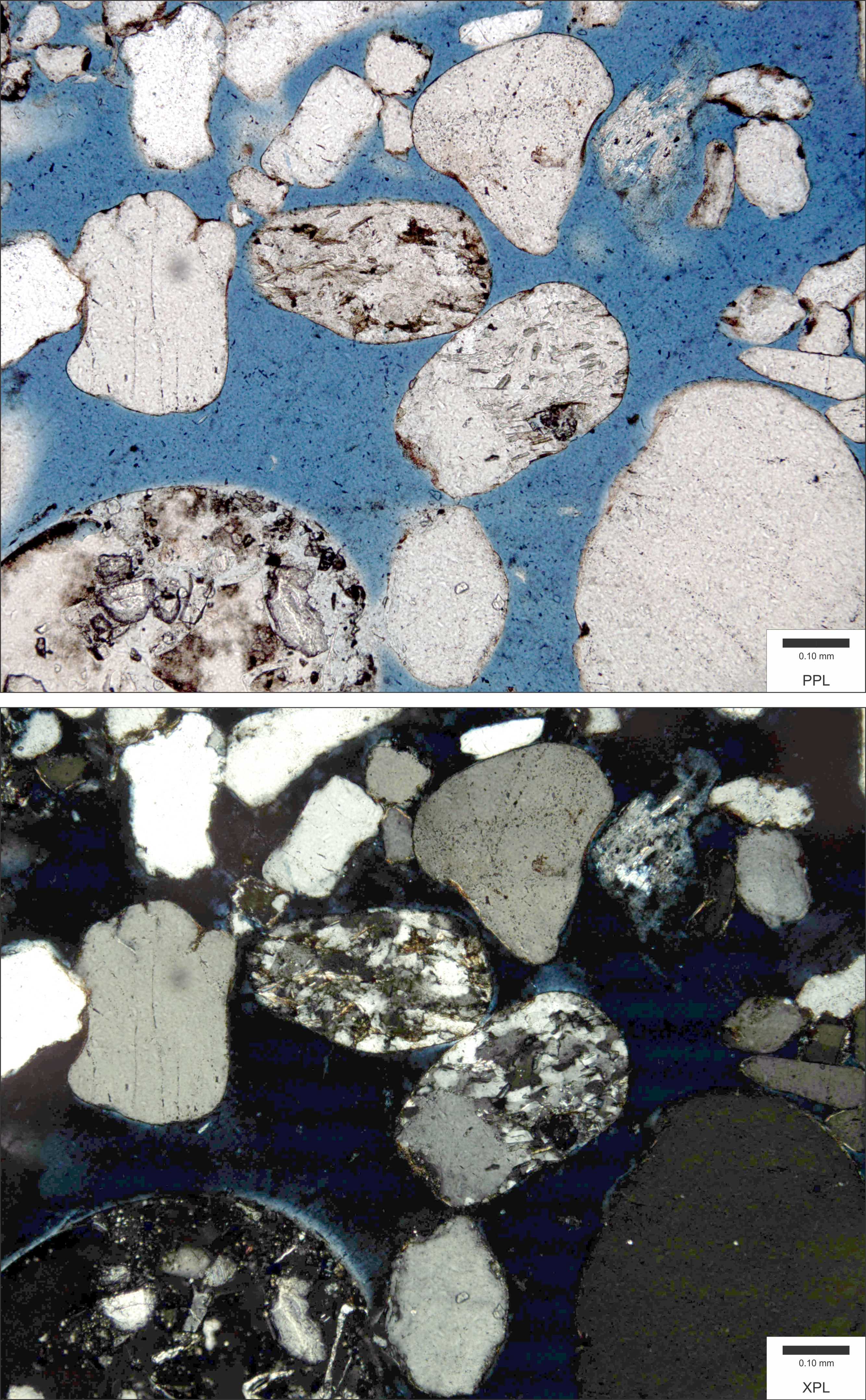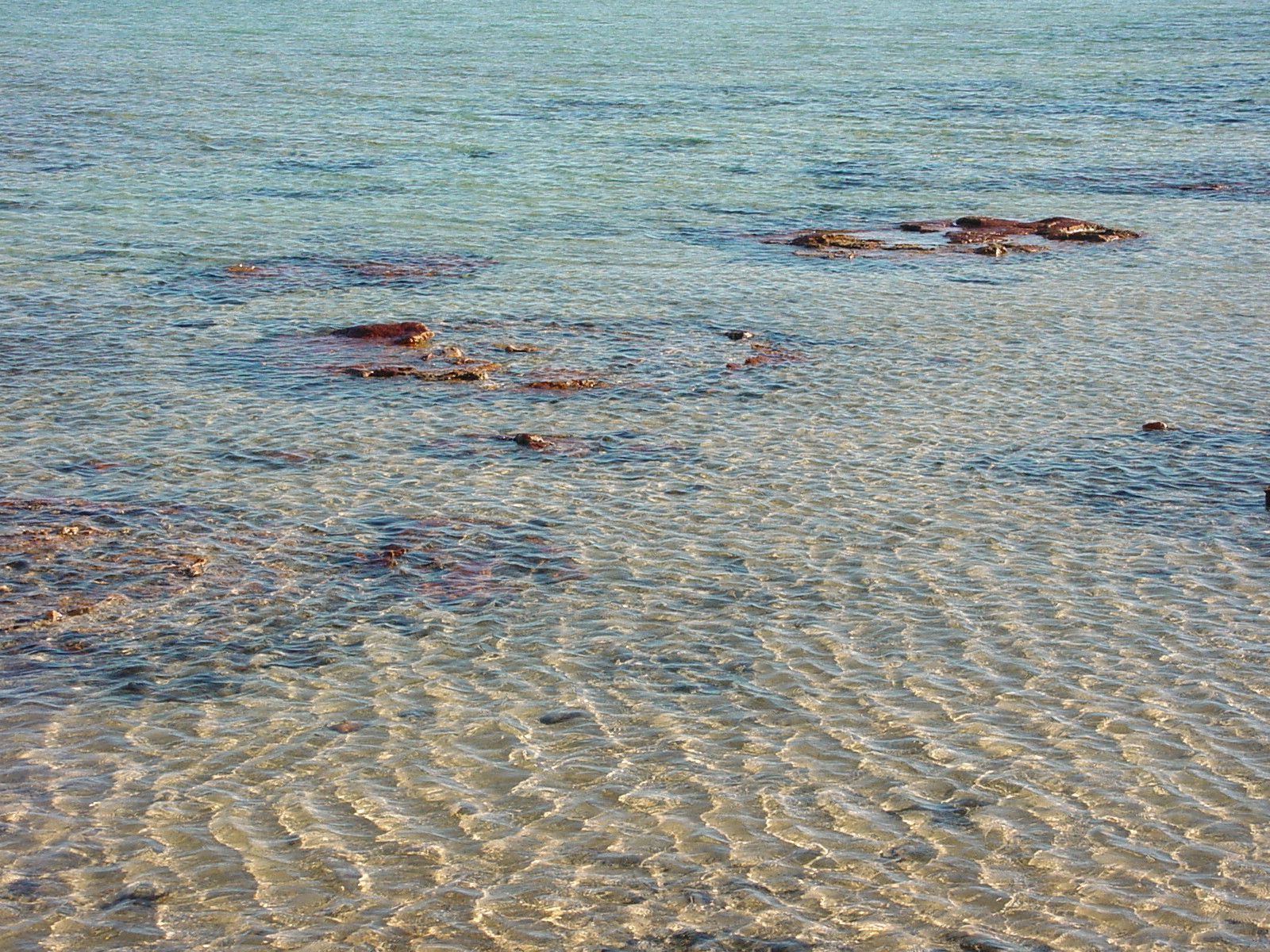|
Jimol Formation
The Jimol Formation ( es, Formación Jimol, N1j) is a fossiliferous geological formation of the Cocinetas Basin in the northernmost department of La Guajira. The formation consists of calcareous lithic and fossiliferous sandstones, siltstones and mudstones. The Jimol Formation dates to the Neogene period; Burdigalian stage, Santacrucian in the SALMA classification, and has a maximum thickness of . Etymology The formation was defined by Renz in 1960 and named after Cerro Jimol.Moreno et al., 2015, p.7 Description Lithologies The Jimol Formation consists of calcareous lithic and fossiliferous sandstones, siltstones and mudstones.Moreno et al., 2015, pp.18-27 Stratigraphy and depositional environment The Jimol Formation overlies the Uitpa Formation and is overlain by the Castilletes Formation. The age has been estimated to be Early Miocene (17.9 to 16.7 Ma), corresponding to the Santacrucian in the SALMA classification. The invertebrate fauna of the Jimol Formation ... [...More Info...] [...Related Items...] OR: [Wikipedia] [Google] [Baidu] |
Burdigalian
The Burdigalian is, in the geologic timescale, an age or stage in the early Miocene. It spans the time between 20.43 ± 0.05 Ma and 15.97 ± 0.05 Ma (million years ago). Preceded by the Aquitanian, the Burdigalian was the first and longest warming period of the MioceneEdward Petuch, Ph.D. Florida Atlantic University, Department of Geosciences. and is succeeded by the Langhian. Stratigraphic definition The name Burdigalian comes from ''Burdigala'', the Latin name for the city of Bordeaux, France. The Burdigalian Stage was introduced in scientific literature by Charles Depéret in 1892. The base of the Burdigalian is at the first appearance of foram species ''Globigerinoides altiaperturus'' and the top of magnetic chronozone C6An. , an official GSSP for the Burdigalian had not yet been assigned. The top of the Burdigalian (the base of the Langhian) is defined by the first appearance of foram species ''Praeorbulina glomerosa'' and is also coeval with the top of magnetic chronozo ... [...More Info...] [...Related Items...] OR: [Wikipedia] [Google] [Baidu] |
Lithic Sandstone
Lithic sandstones, or lithic arenites, or litharenites, are sandstones with a significant (>5%) component of lithic fragments, though quartz and feldspar are usually present as well, along with some clayey matrix. Lithic sandstones can have a speckled (salt and pepper) or gray color, and are usually associated with one specific type of lithic fragment (i.e., igneous, sedimentary, or metamorphic).Prothero, D. R. and Schwab, F., 1996, Sedimentary Geology, pg. 100, Tectonically, lithic sandstones often form in a wide variety sedimentary depositional environments (including fluvial, deltaic, and alluvial sediments) associated with active margins. This tectonic setting provides the source of the lithic fragments, either through arc volcanism, thin-skinned faulting, continental collisions, unroofing, and subduction roll-back. See also *Arkose Arkose () or arkosic sandstone is a detrital sedimentary rock, specifically a type of sandstone containing at least 25% fel ... [...More Info...] [...Related Items...] OR: [Wikipedia] [Google] [Baidu] |
Falcón Basin
) , anthem = , image_map = Falcon in Venezuela.svg , map_alt = , map_caption = Location within Venezuela , pushpin_map = , pushpin_map_alt = , pushpin_mapsize = , pushpin_map_caption = , coordinates = , coordinates_footnotes = , subdivision_type = Country , subdivision_name = Venezuela , subdivision_type1 = , subdivision_name1 = , subdivision_type2 = , subdivision_name2 = , established_title = Created , established_date = 1864 , founder = , named_for = , seat_type = Capital , seat = Coro , government_footnotes = , government_type = , leader_party = , governing_body= Legislative Council , leader_title = Governor , leader_name = Víctor Clark , area_footnotes = , area_total_km2 ... [...More Info...] [...Related Items...] OR: [Wikipedia] [Google] [Baidu] |
Cerro Pelao Formation
Cerro is Spanish for "hill" or "mountain". Toponyms ;Bolivia: * Cerro Rico, the "Rich Mountain" containing silver ore near Potosi, Bolivia ;Brazil: *Cerro Branco, a municipality of Rio Grande do Sul *Cerro Grande, Rio Grande do Sul, a municipality of Rio Grande do Sul * Cerro Largo, a municipality of Rio Grande do Sul ;Chile * Cerro de Los Inocentes, in the Juan Fernández Islands ;Cuba: * Cerro, Havana, a district (''municipio'') ;Italy: *Cerro (Bottanuco), a subdivision of Bottanuco in the province of Bergamo *Cerro al Lambro, in the province of Milano *Cerro al Volturno, in the province of Isernia * Cerro Maggiore, in the province of Milano *Cerro Tanaro, in the province of Asti * Cerro Veronese, in the province of Verona ;Mexico: * Cerro Potosí ;United States: * Cerro, New Mexico ;Uruguay: * Cerro Largo Department * Villa del Cerro, in Montevideo * Fortaleza del Cerro, in Montevideo Football clubs * C.A. Cerro, a football club from Montevideo, Uruguay * Club Ce ... [...More Info...] [...Related Items...] OR: [Wikipedia] [Google] [Baidu] |
Agua Clara Formation
{{disambig ...
Agua means water in Spanish. Agua may also refer to: Places * '' Agua de Dios'' (God's water), a municipality in Colombia * Volcán de Agua, a stratovolcano located in Guatemala Arts, entertainment, and media * ''Agua'' (film), a 2006 Argentine and French sports drama film * "Agua" (song), a 2020 song by Tainy and J Balvin * "Agua", a 2018 song by Saweetie from ''High Maintenance'' * " Água de Beber", a song by Antônio Carlos Jobim and Vinicius de Moraes See also * Águas Águas may refer to: Places * Dos Aguas, a municipality in the Valencian Community, Spain * Aguas, municipality in Aragon, Spain * Palace of the Marqués de Dos Aguas, a Rococo palace in Valencia, Spain People People with this surname include: * J ... [...More Info...] [...Related Items...] OR: [Wikipedia] [Google] [Baidu] |
Inner Shelf
Interior may refer to: Arts and media * ''Interior'' (Degas) (also known as ''The Rape''), painting by Edgar Degas * ''Interior'' (play), 1895 play by Belgian playwright Maurice Maeterlinck * ''The Interior'' (novel), by Lisa See * Interior design, the trade of designing an architectural interior Places * Interior, South Dakota * Interior, Washington * Interior Township, Michigan * British Columbia Interior, commonly known as "The Interior" Government agencies * Interior ministry, sometimes called the ministry of home affairs * United States Department of the Interior Other uses * Interior (topology), mathematical concept that includes, for example, the inside of a shape * Interior FC, a football team in Gambia See also * * * List of geographic interiors * Interiors (other) * Inter (other) * Inside (other) Inside may refer to: * Insider, a member of any group of people of limited number and generally restricted access Film * ''Inside'' ... [...More Info...] [...Related Items...] OR: [Wikipedia] [Google] [Baidu] |
Shallow Marine
Shallow water marine environment refers to the area between the shore and deeper water, such as a reef wall or a shelf break. This environment is characterized by oceanic, geological and biological conditions, as described below. The water in this environment is shallow and clear, allowing the formation of different sedimentary structures, carbonate rocks, coral reefs, and allowing certain organisms to survive and become fossils. Sediment The sediment itself is often composed of limestone, which forms readily in shallow, warm calm waters. The shallow marine environments are not exclusively composed of siliciclastic or carbonaceous sediments. While they cannot always coexist, it is possible to have a shallow marine environment composed solely of carbonaceous sediment or one that is composed completely of siliciclastic sediment. Shallow water marine sediment is made up of larger grain sizes because smaller grains have been washed out to deeper water. Within sedimentary rocks compos ... [...More Info...] [...Related Items...] OR: [Wikipedia] [Google] [Baidu] |
Panama
Panama ( , ; es, link=no, Panamá ), officially the Republic of Panama ( es, República de Panamá), is a transcontinental country spanning the southern part of North America and the northern part of South America. It is bordered by Costa Rica to the west, Colombia to the southeast, the Caribbean Sea to the north, and the Pacific Ocean to the south. Its capital and largest city is Panama City, whose metropolitan area is home to nearly half the country's million people. Panama was inhabited by indigenous tribes before Spanish colonists arrived in the 16th century. It broke away from Spain in 1821 and joined the Republic of Gran Colombia, a union of Nueva Granada, Ecuador, and Venezuela. After Gran Colombia dissolved in 1831, Panama and Nueva Granada eventually became the Republic of Colombia. With the backing of the United States, Panama seceded from Colombia in 1903, allowing the construction of the Panama Canal to be completed by the United States Army Corps of ... [...More Info...] [...Related Items...] OR: [Wikipedia] [Google] [Baidu] |
Culebra Formation
The Culebra Formation (Tcb)Geologic Map, 1980 is a geologic formation in Panama. It preserves fossils dating back to the Miocene period; Early Miocene epoch, Aquitanian to Burdigalian stages ( Late Arikareean to Hemingfordian in the NALMA classification). Fossils of '' Culebrasuchus'' have been found in and named after the formation.''Culebrasuchus'' at .org The thickness of the formation is at least thick,Kirby et al., 2008, p.7 and the age has been estimated as from 23 to 19 Ma.Kirby et al., 2008, p.11 Fossil content * '' |
Early Miocene
The Early Miocene (also known as Lower Miocene) is a sub-epoch of the Miocene Epoch made up of two stages: the Aquitanian and Burdigalian stages. The sub-epoch lasted from 23.03 ± 0.05 Ma to 15.97 ± 0.05 Ma (million years ago). It was preceded by the Oligocene epoch. As the climate started to get cooler, the landscape started to change. New mammals evolved to replace the extinct animals of the Oligocene epoch. The first members of the hyena and weasel family started to evolve to replace the extinct '' Hyaenodon'', entelodonts and bear-dogs. The chalicotheres survived the Oligocene epoch. A new genus of entelodont called '' Daeodon'' evolved in order to adapt to the new habitats and hunt the new prey animals of the Early Miocene epoch; it quickly became the top predator of North America. But it became extinct due to competition from ''Amphicyon ''Amphicyon'' ("ambiguous dog") is an extinct genus of large carnivorous bone-crushing mammals, popularly known as bear dogs ... [...More Info...] [...Related Items...] OR: [Wikipedia] [Google] [Baidu] |
SALMA
The South American land mammal ages (SALMA) establish a geologic timescale for prehistoric South American fauna beginning 64.5 Ma during the Paleocene and continuing through to the Late Pleistocene (0.011 Ma). These periods are referred to as ages, stages, or intervals and were established using geographic place names where fossil materials where obtained.Flynn & Swisher, 1995 The basic unit of measure is the first/last boundary statement. This shows that the first appearance event of one taxon is known to predate the last appearance event of another. If two taxa are found in the same fossil quarry or at the same stratigraphic horizon, then their age-range zones overlap. Background South America was an island continent for much of the Cenozoic, or the "Age of Mammals". As a result, its mammals evolved in their own unique directions, as Australia and Madagascar still have today. Paleogeographic timeline A simplified paleogeographic timeline of South America: * 66 Ma – South ... [...More Info...] [...Related Items...] OR: [Wikipedia] [Google] [Baidu] |

